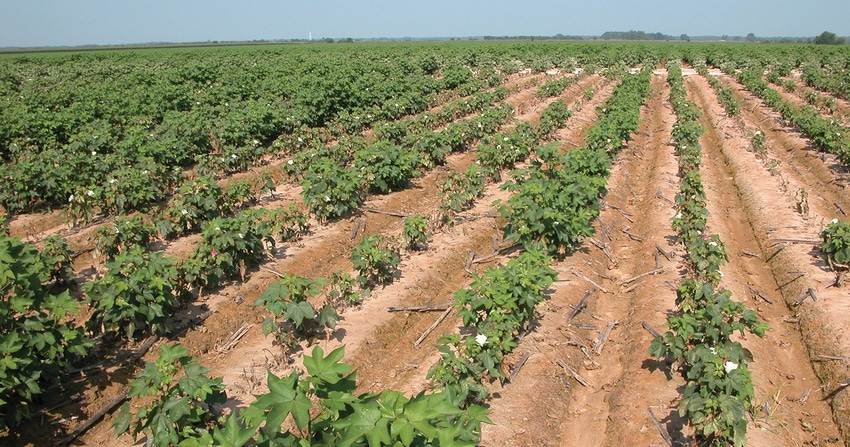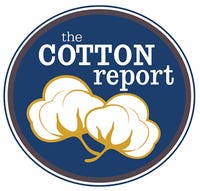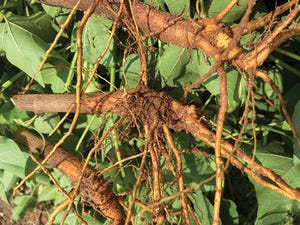
Cotton Belt Extension plant pathologists say damage from diseases and nematodes can total hundreds of pounds of lost lint per acre.
The best management tactic is to avoid infection. Varietal resistance is the foundation for managing nematodes and bacterial blight.
 The Cotton Belt features some common threats.
The Cotton Belt features some common threats.
In the Southeast, University of Georgia plant pathologist Bob Kemerait said nematodes account for 60% of total diseases losses in Georgia.
“Root knot nematodes are the most widespread,” Kemerait said. “We see some sting and reniform, but root knot causes most of the damage.”
Target spot, areolate mildew, and Fusarium wilt are fungal diseases, in addition to seedling disease, that cause significant losses without protection from fungicides. “Seedling diseases alone would be a tremendous problem except for use of fungicide seed treatments.” he said. For boll rot, “we have no truly effective answers.”
Severe losses
Kemerait said nematodes can take 200 pounds to 500 pounds or more of lint per acre.
He said target spot can take 100 pounds to 200 pounds. Areolate mildew can take 100 pounds to 300 pounds, and Fusarium wilt in conjunction with nematodes can account for “hundreds of pounds” in losses.
Boyd Padgett, Louisiana State University plant pathologist in Baton Rouge, said top threats to Louisiana/Mid-South cotton include seedling diseases, nematodes (root knot and reniform), Fusarium wilt, boll rots, leaf spot complex, and target spot.
Padgett’s LSU colleague Trey Price said seedling diseases are “one of the biggest issues and caused by a number of different fungal pathogens.”
Target spot
“The most calls I get regarding foliar diseases are for target spot,” Price said. “If the disease starts in July and we don’t have cotton weather (frequent rainfall events) target spot can cause significant premature defoliation that can result in a yield loss if final defoliation levels exceed 50%.”
Target spot on Louisiana cotton. (Trey Price)
Target spot starts low in the canopy after closure and moves up the plant. Lesions start as water-soaked-gray to green, becoming brown with a target like appearance.
Price said target spot can cause losses up to 200 pounds of lint per acre if it starts early in July and continues to develop. “Yield losses due to target spot usually only happen in years with very frequent rainfall events and cloudy weather.”
Price said fungicides work on target spot but “rarely result in yield preservation. Fix potassium and fix cotton leaf spot complex.”
Bacterial blight can cause catastrophic yield losses in susceptible varieties, he said, but yield losses due to cotton leaf spot complex are very rare.
Fungicide ROI?
“Fungicides are effective. However, a return on that investment is the exception rather than the rule. Cotton that is overfertilized (N) or is rank is apt to develop target spot. If target spot starts in mid-August, odds are it will function as free defoliant. Save foliar fungicide money for plant bugs unless target spot starts in early to mid-July,” Price said.
Resistance best bet
Varietal resistance is the best option for Bacterial blight. Symptoms include angular, purple lesions on leaves that sometimes follow veins.
“Don’t use too much nitrogen or irrigate excessively overhead,” Price cautioned. “Fungicides don’t work on bacteria.”
Cecilia Monclova-Santana, Texas A&M AgriLife Extension in Lubbock, said Southwest cotton can harbor numerous pathogens — fungi, bacteria, nematodes, “and even viruses when the environmental conditions are perfect for it. From soil, stems, and bolls, all cotton parts can be a target of a hungry microorganism,” Monclova-Santana said.
Diseases in Southwest cotton can be divided mostly into two categories: early-season and late-season. “Early-season include seedling diseases that can be caused by fungi such as Pythium, Rhizoctonia, Fusarium, and Thielaviopsis.
“Nematodes can be considered early and late season, depending on the nematode levels and the environment. Reniform and root knot nematodes can be very detrimental, particularly in sandy soils,” she said.
Late-season diseases such as Verticillium wilt, Bacterial blight, and Fusarium wilt may occur.
“Foliar disease such as leaf spots are common in the Southern High Plains; however, when the peak is reached in mid-August rarely is foliar fungicide recommended,” Monclova-Santana said.
She recommends programs such as the National Predictive Modeling Tool Initiative to track and understand the pathogens to prepare for timely applications.
Symptoms
“For nematodes, look for stunting plants that just don’t grow based on the water and fertility levels. Also watch for ‘tiger striping’ (interveinal chlorosis),” Kemerait said.
 Root knot nematode and Fusarium in Louisiana cotton. (Boyd Padgett)
Root knot nematode and Fusarium in Louisiana cotton. (Boyd Padgett)
Injury that may appear to be fertilizer deficiency “screams nematode damage. Where root knot nematodes are present, look at the roots for galling, too, but symptoms of nutrient deficiency in the foliage are an obvious indicator, especially if a producer missed treating with a nematicide or didn’t apply enough product.”
Look for target spot in the first week of bloom in high-growth cotton. “Watch the lower canopy for lesions about the size of a marble. It looks like a target with concentric rings,” Kemerait said.
The spots and subsequent defoliation start at the bottom and move upward.
Aerolate mildew resembles powdery mildew early and later leaves have a frosted look; leaves crumble and drop quickly with rapid defoliation.
Boll rot can be associated with insect damage, especially on the lower bolls, where the longest periods of leaf moisture and the least air flow occur.
Padgett said symptoms to watch for include:
Seedling disease - non-uniform stand, damping off, wire stem, and sore shin.
Boll rots, late season - hard lock, fungal covered locks,
Nematodes - root knot galling on roots, deteriorated roots, stunting.
BMPs
Seed treatment fungicides are key for management of seedling diseases. “However, it is important to know what you are dealing with in order to select the appropriate chemicals,” Monclova-Santana said. “An additional in-furrow application can prove effective if disease levels are higher than normal. Establishing a healthy seedling can be a game changer. No varieties are resistant to seedling diseases.”
Price said fungicide seed treatments are critical for stand establishment.
“Most seed companies will have a base fungicide seed treatment containing at least two, usually three, modes of action,” he said. “If the seed has strobilurin, metalaxyl or mefenoxam, and a triazole on it, odds are this protection will be adequate. However, if planting conditions and extended weather forecast are not ideal, farmers have the option to overtreat with additional modes of action such as SDHIs (succinate dehydrogenase inhibitor) or fludioxinil.”
For managing seedling disease, Padgett said, plant when conditions favor rapid emergence and seedling establishment (65 F 4-inch soil temperature, preferably closer to 85 F with no approaching cold front for at least four days, and adequate soil moisture). Use fungicide seed treatments, and plant in a clean seed bed. Avoid planting too deep.
Other recommendations include crop rotation, practices that promote plant health (proper drainage, avoiding droughty conditions if possible), and nematicides.
Tolerant varieties, where available, may help manage Fusarium wilt.
Other tips include:
Proper nutrition (potassium) is important to manage the leaf spot complex.
Plant-growth regulators may help reduce rank growth and boll rot incidence.
Controlling insects during boll development are important consideration to prevent boll rots.
Resistance is key
“Producers have one chance on nematodes — when they close the furrow, that chance is gone. Prior to closing the furrow is when they decide to use a resistant variety or a nematicide or to simply roll the die,” Kemerait said.
“Although, nematicides such as Velum, Temik, and Propulse have proven to provide protection, all need irrigation water to be activated and work properly,” Monclova-Santana said.
Every year Texas A&M Research and Extension pathologists publish variety screening results for the region (https://lubbock.tamu.edu/).
Later in the season, Kemerait said, well-timed applications of foliar fungicides are effective. “Usually, one well-timed fungicide application is adequate. Be aware, however, that some fungicides may be in short supply this year.”
Monclova-Santana said variety selection is the best bet for controlling late-season diseases such as Verticillium wilt, Bacterial blight, and Fusarium wilt.
“Planting cotton without consideration for management of nematodes and important diseases is asking for trouble,” Kemerait said “The yields we’ve been able to make in recent years, in spite of diseases and nematodes, is a testament to how good these resistant varieties and products are.”
About the Author(s)
You May Also Like






